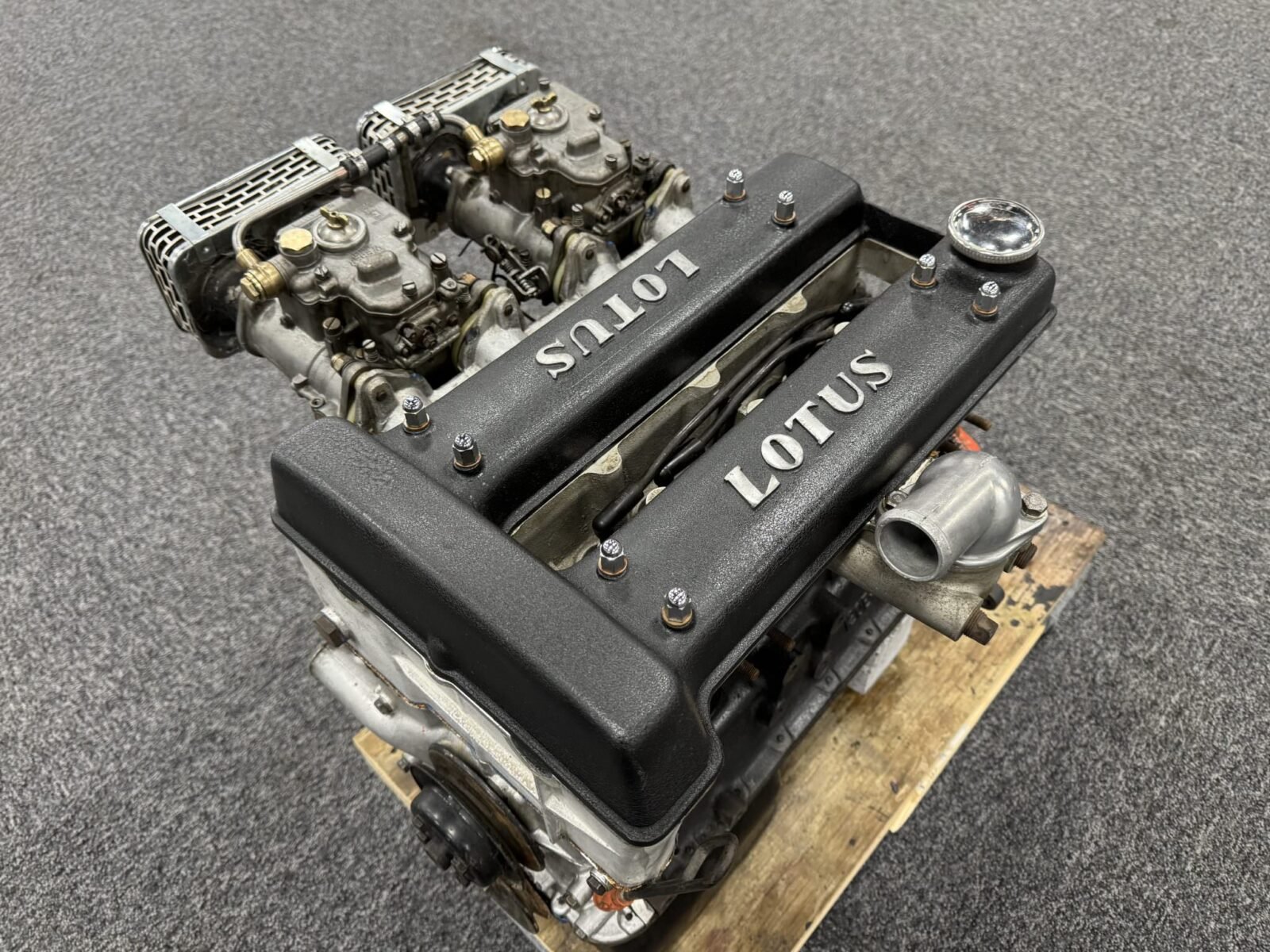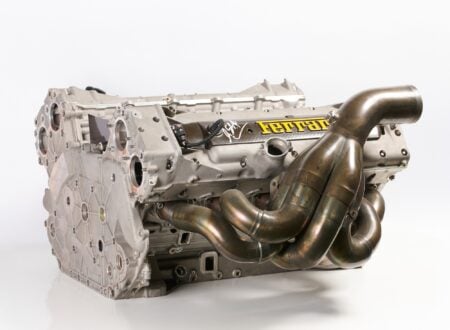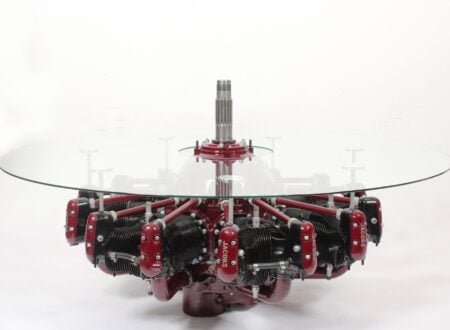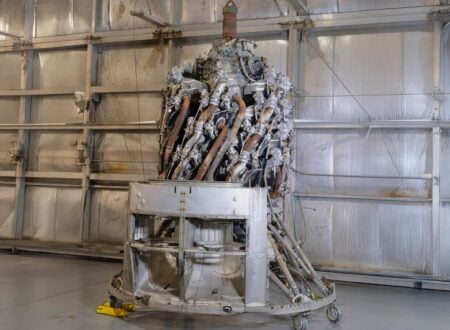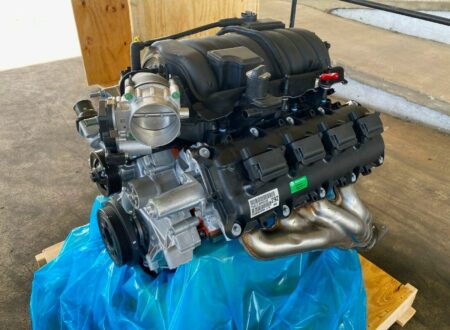This is a Lotus Twin Cam engine that was reportedly rebuilt in 1975 and then raced a total of five times while fitted to a Bobsy SR3 race car. Since then it’s been in storage, and it’s now being offered for sale.
The Lotus Twin Cam is a four-cylinder engine that was loosely based on the Ford Kent inline-four – the original non-crossflow head was removed and replaced with a far more advanced crossflow double overhead cam alloy head that flowed and breathed far better – and could make much more power.
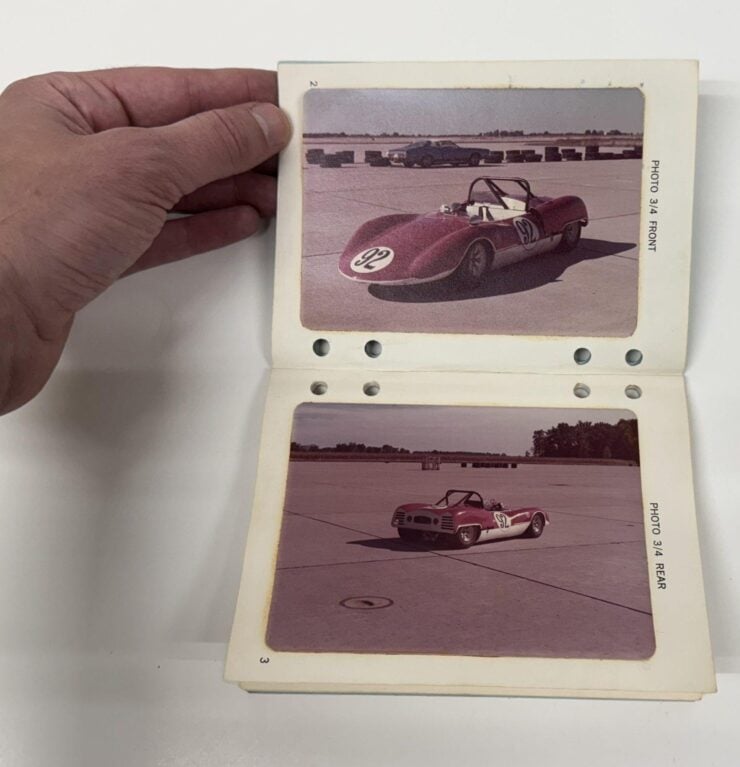

History Speedrun: The Lotus Twin Cam Engine
The Lotus Twin-Cam engine, sometimes called the Lotus-Ford Twin Cam, is one of the defining British performance inline-fours of the 1960s and 1970s. It was conceived by Lotus founder Colin Chapman and his engineering team, and cleverly it combined Ford’s well-known 1,558cc Kent four-cylinder engine block with a Lotus-designed aluminum double overhead camshaft cylinder head – producing an engine that was lightweight, powerful, and ideal for both road and race use.
Development on the Twin Cam began when Chapman realized he needed a compact power unit to propel his growing line of road cars and Formula Juniors. Lotus had been using Coventry Climax and Ford engines, but Chapman wanted something that could deliver genuine performance at a lower cost and with easier parts supply.
In 1962, Lotus engineer Harry Mundy designed an alloy crossflow head for the Ford 116E block, while ex-Coventry Climax designer Walter Hayes at Ford approved the Ford-Lotus partnership. The result was an engine that maintained Ford’s tough cast-iron bottom end but acquired a technically sophisticated hemispherical combustion chamber layout with double overhead camshafts – relatively rare for a small British series production car at the time.
The earliest production version of the Lotus Twin Cam appeared in the 1962 Lotus Elan, producing somewhere in the region of 100 bhp in standard tune. The engine was remarkably smooth and responsive, thanks to its short-stroke and famously free-revving nature.
Over the next few years, Lotus modified the Twin Cam into several new configurations – the standard unit typically had compression ratios between 9.5:1 and 10.5:1 and twin Weber or Dell’Orto carburetors. The “SE” (Special Equipment) version, fitted to the Elan and Cortina, pushed output to roughly 115 bhp. In 1971, the “Big-Valve” variant arrived with larger ports, high-lift cams, and a bump in compression, producing about 126 bhp and a livelier top end.
The Lotus-Cortina Mk1 was the first production sedan to use the Twin Cam, its 105 bhp output made the modest formerly Cortina a formidable competitor in touring car racing. Jim Clark famously drove one to a win in the 1964 British Saloon Car Championship, permanently establishing the engine’s motorsport reputation, and doing no harm to the street cred of the road cars fitted with Lotus’ new four banger.
The Europa soon followed, benefiting from the same power unit that delivered a high specific output for its size and weight. Lotus also supplied the Twin Cam to other manufacturers and race constructors, including Caterham (after they took over production of the Seven), Morgan, and even small specialist marques like Ginetta and TVR.
The cylinder head went through numerous casting revisions, identifiable by marks like “L,” “B,” and “Q,” reflecting changes in port geometry and water-jacket design. Early engines occasionally suffered from minor sealing issues but improved significantly as Lotus refined its casting and assembly processes.
The Twin Cam’s versatility made it a mainstay in club racing – in Formula 2, Formula 3, and various sports car classes, modified versions of the Twin Cam, sometimes equipped with fuel injection or dry-sump lubrication, produced well over 160 bhp.
Tuners like Vegantune, BRM, and Cosworth offered upgrade kits and bespoke heads, transforming the engine into a genuine racing unit. The Cosworth-modified versions laid groundwork for the later BDA (Belt Drive A-series) engines that powered rally legends like the Escort RS1600.
By the early 1970s, the Twin Cam’s production life was nearing its end, officially ending in 1975. The Lotus 907 engine, a modern all-alloy DOHC four of Lotus’s own design, began to replace it in new models like the Elite and Eclat.
The Twin Cam had powered some of Lotus’s most iconic cars: the Elan, Cortina, Europa, and Seven – and its DNA influenced every four-cylinder Lotus-built engine that followed (and a certain V8 that followed on from them).
The Lotus Twin Cam Engine Shown Here
This is a 1.5 liter version of the Lotus Twin Cam engine, the exact displacement isn’t listed, however this would most likely make it the 1,498cc version.
According to the listing, this engine was last rebuilt in around 1975 and then installed into a Bobsy SR3 race car which competed five times with it, then the engine was removed and put into storage. It’s probably safe to say that it needs a rebuild before any driving or racing is attempted.
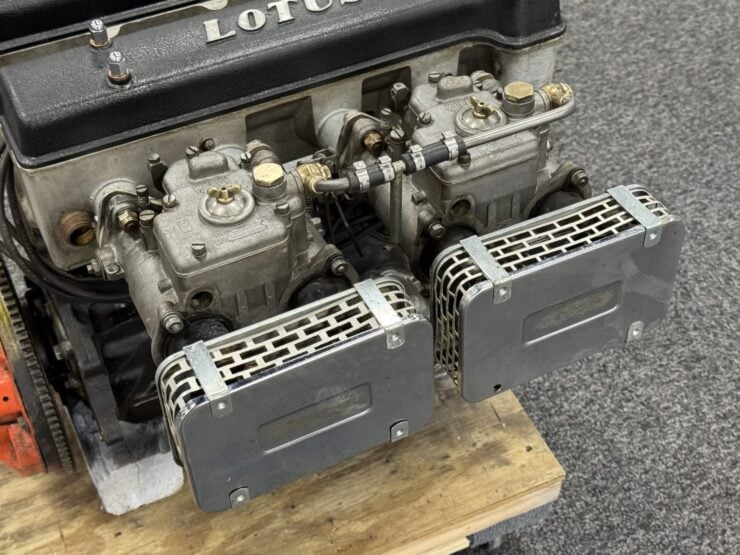

It now turns by hand, and it’s fitted with dual Weber 40 DCOE 18 carburetors, a Lucas distributor, a fuel pump, a thermostat, an oil sump, a flywheel, and a clutch. It also comes with an additional belt, alternator, and some assorted hardware.
The engine is now being offered for sale out of Galena, Ohio on Bring a Trailer at no reserve, and you can visit the listing here if you’d like to read more about it or place a bid.
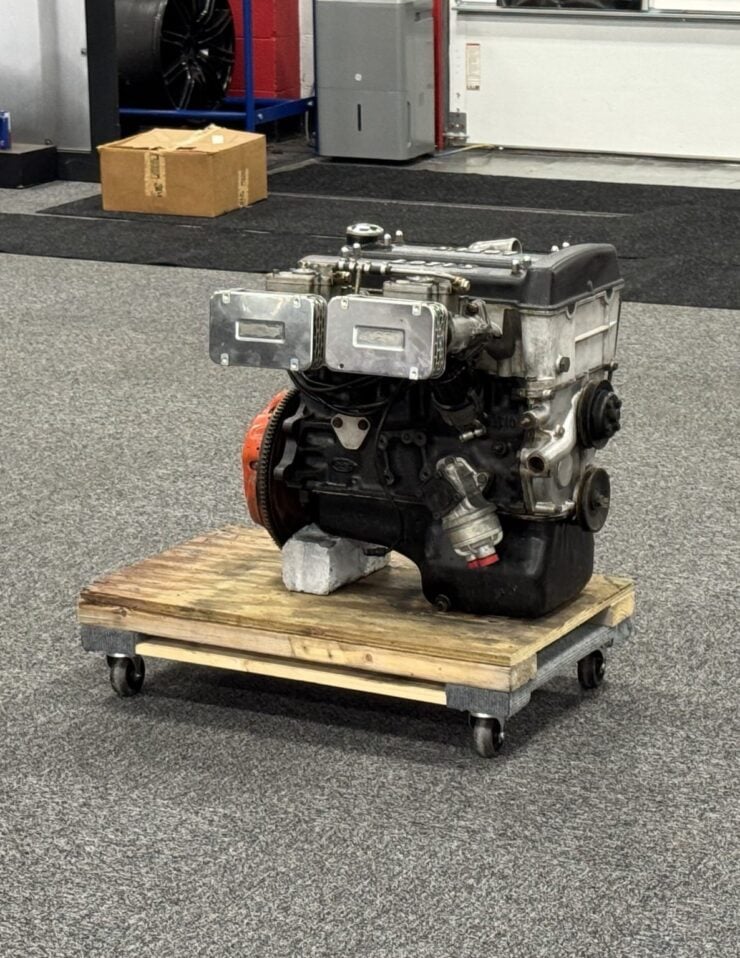
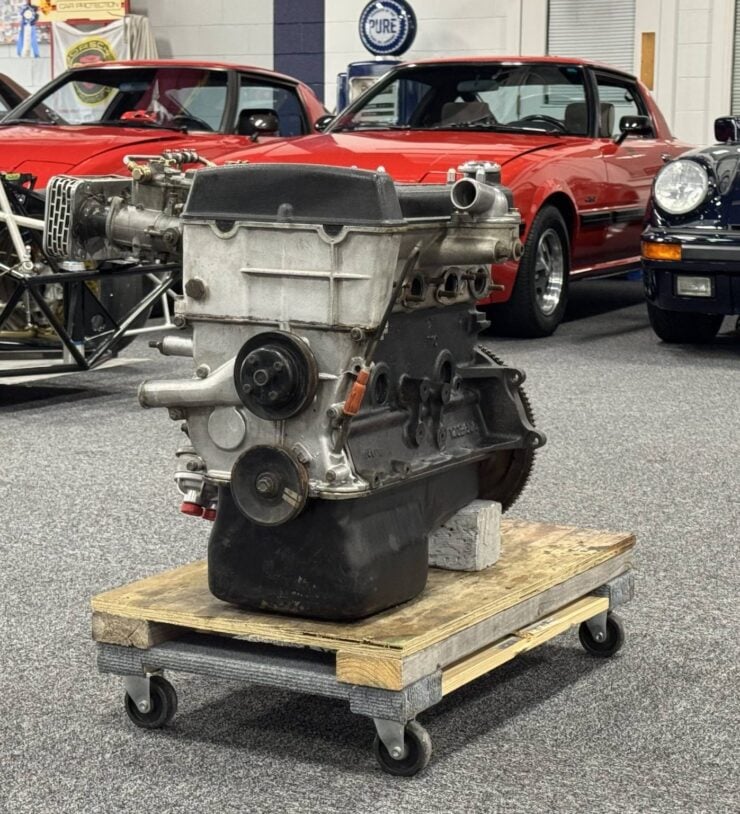


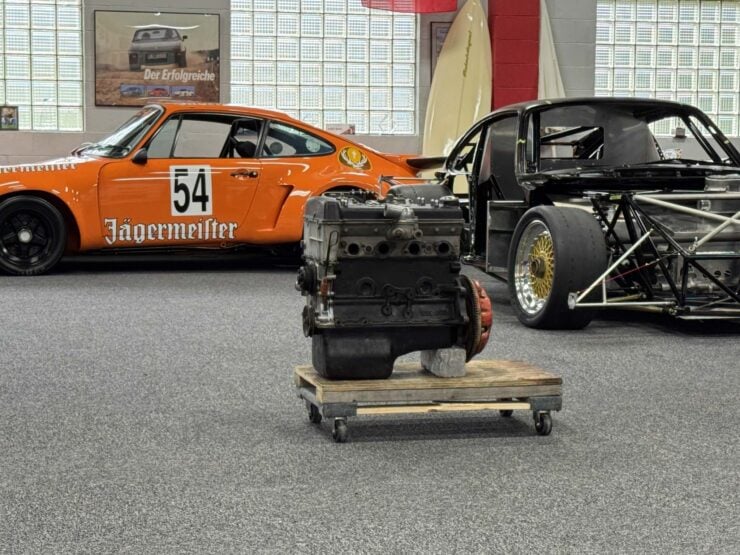


Images courtesy of Bring a Trailer

